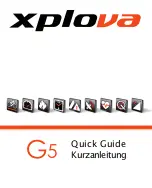
5-28
RedMAX Administration and Maintenance Guide
Redline Communications Inc. Confidential and Proprietary
A configured reference RSS of -63dBm means that the actual signal power received from
the subscriber is 17dBm weaker than expected, and as such, the IF gain is insufficient. If
the reference RSS were changed to -80dBm, the IF gain would be increased. Thus, by
decreasing the reference RSS, we increase the IF gain.
Unfortunately, in doing so we also increase the amount of distortion introduced by
amplification, so although we improve the RSSI, and thus the CINR of the link, the signal
quality may still not be such that we can achieve 64QAM 3/4. It will however be better than
it would have been had we left a 17dBm difference between the reference RSS and the
SU's best achievable uplink RSSI.
Complications arise when you have a large number of SU's, some with low pathloss, and
some with relatively high pathloss. If you set the reference RSS to accommodate only
those SU's with low pathloss, then those with high path loss may have their signal quality
significantly impacted due to radio saturation. However, if you configure the reference RSS
to accommodate those SU's with a high pathloss, then those with low pathloss may not
have sufficient gain to register at all. You should set the initial reference RSS to the mean
average of the uplink RSSI of all of the SU's in the sector. You then move the value up or
down to determine the optimum value for the each link.
Subscriber Unit De-Registration
Event Log Entries
When an subscriber unit de-registers, two pieces of information are logged to assist in
troubleshooting. First, when the subscriber unit de-registers, its event log is updated with
a message and timestamp detailing the cause of the de-registration. Search through the
SU's event log and look for messages like:
•
DHCP Timeout
•
DL Map Lost
The second piece of information is located in the AN100U/UX's event log. This message
contains a timestamp, the SU's MAC Address, and a reason in brackets. The reason can
be:
•
re-ranging—indicates that the subscriber station initiated network entry while the
AN100U/UX believed it was still connected. The only method the AN100U/UX has to
determine whether an subscriber unit is still connected is by receiving traffic from it. If
there is no network traffic, the only data sent by the subscriber unit is a periodic range,
which occurs every 25 seconds. Thus, it can take up to 25 seconds for the AN100U/UX
to detect that an subscriber unit has gone offline. During this 25 seconds, it is entirely
possible for the subscriber unit to attempt to register again. If it is successful, this will
cause a "Re-ranging" message.
•
rngRetries—means that the ranging process failed. See “Sector Controller Serial
Communication Issues” on page 5-13 and “Sector Controller IP Connectivity Issues”
on page 5-14 to troubleshoot the wireless interface.
















































